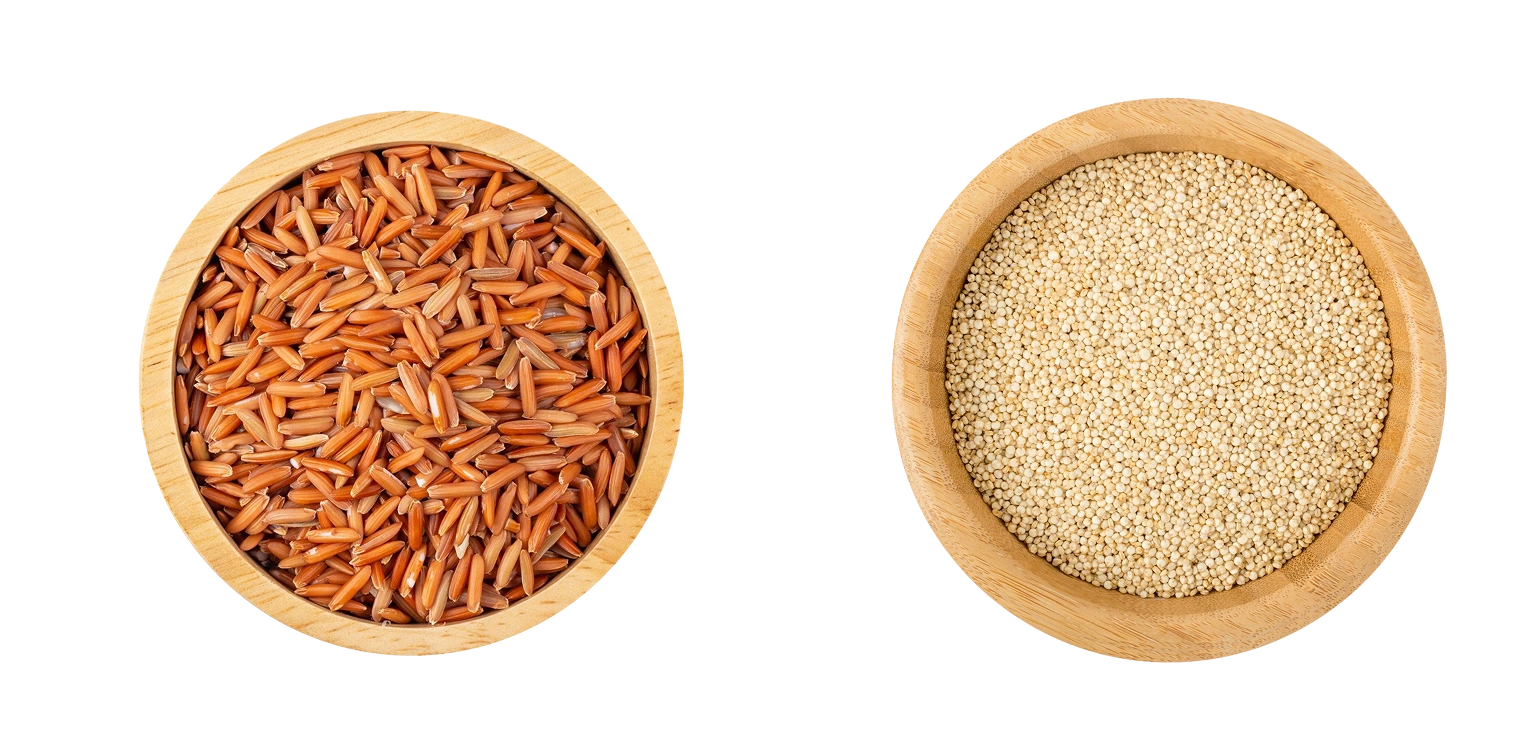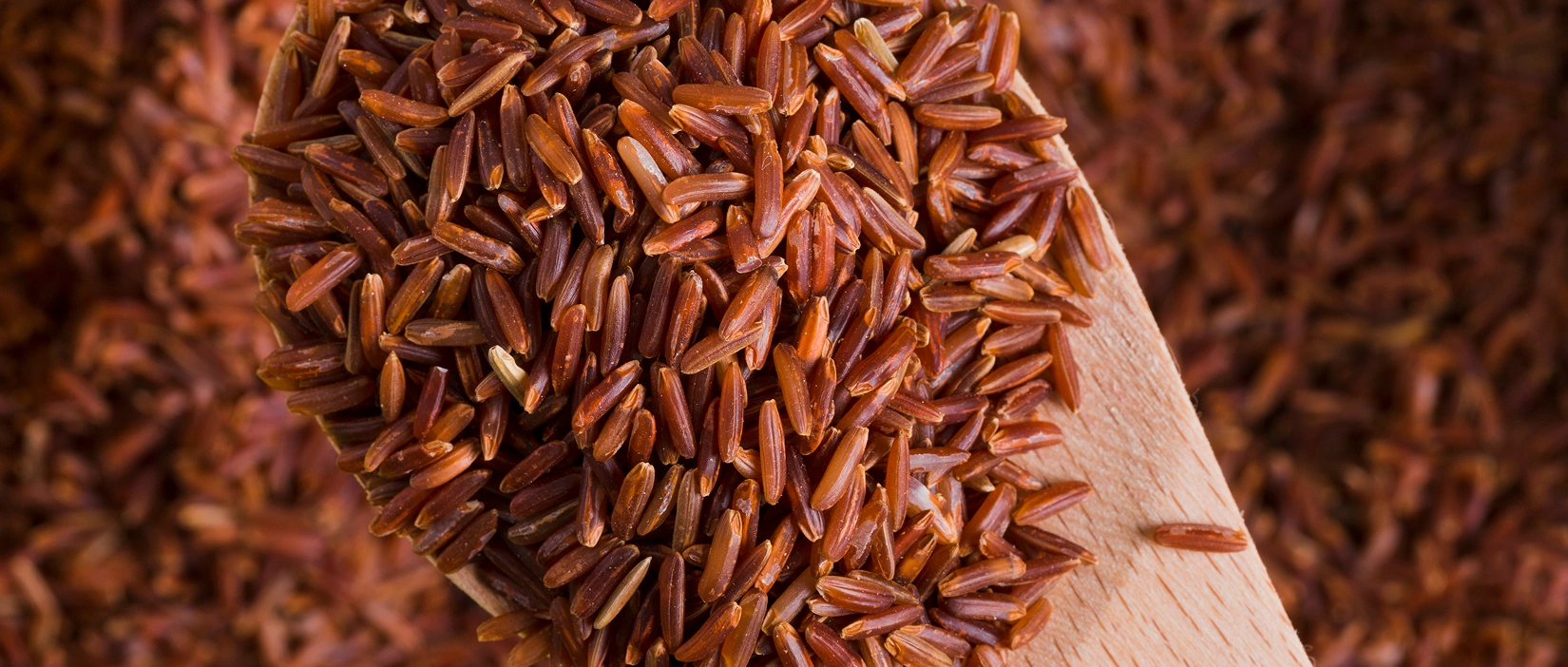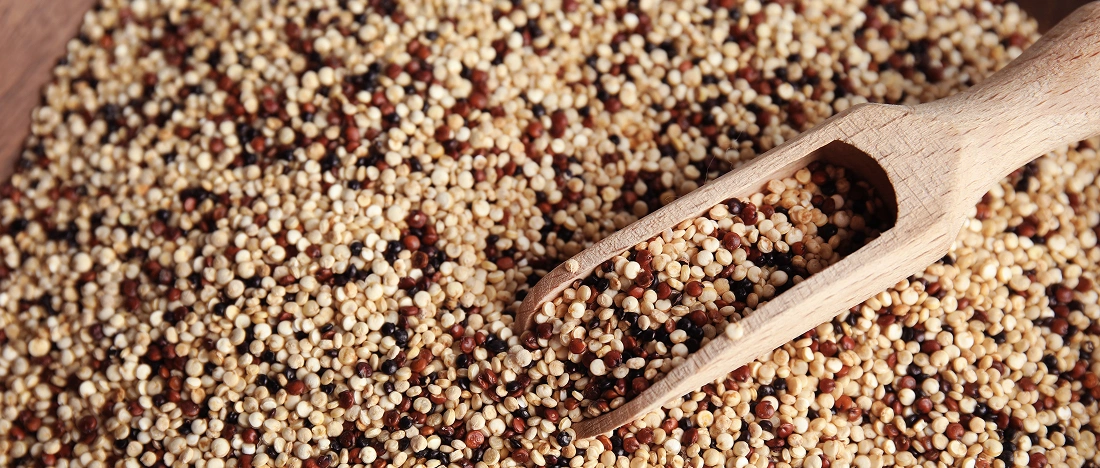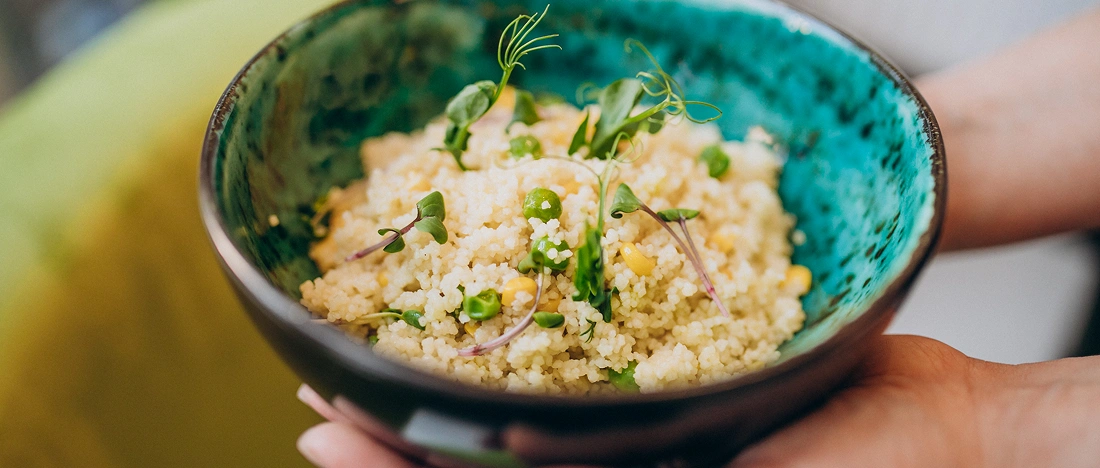Brown Rice vs Quinoa: Which Is Healthier for You?

When it comes to whole grains, brown rice vs quinoa is a debate many health-conscious eaters face. Both are nutrient-dense, versatile, and widely recommended in balanced diets—but which is better for your health goals?
In this comprehensive guide, we’ll break down:
- Nutritional profiles of brown rice and quinoa
- Benefits for weight loss and satiety
- Differences in glycemic index and blood sugar impact
- Practical tips for cooking and meal planning
- Sample recipes to include in your diet
By the end, you’ll know exactly how to choose—or even combine—these grains for optimal health.
What Are Brown Rice and Quinoa?
Brown Rice
Brown rice is a whole grain with the outer bran and germ intact. Unlike white rice, which is stripped of these nutrient-rich layers, brown rice retains fiber, antioxidants, and essential minerals like magnesium, manganese, and selenium.

Quinoa
Quinoa is technically a seed, but it cooks like a grain. Known as a pseudo-grain, quinoa is gluten-free and considered a complete protein—it contains all nine essential amino acids. It’s also rich in fiber, magnesium, iron, and B vitamins, making it a nutritional powerhouse.

Brown Rice vs Quinoa Nutrition
Here’s a side-by-side comparison for 1 cup cooked:
| Rice Type | Rice : Water (Ratio) | Cooking Notes |
|---|---|---|
| Long-grain white / Basmati | 1 : 1.25 | Cooks in ~15-20 minutes; grains stay separate |
| Jasmine / Fragrant | 1 : 1.2 | Slightly less liquid for fluffier rice |
| Brown Rice / Whole Grain | 1 : 1.5 to 1 : 1.75 | Requires longer cooking time; more fiber |
| Short-grain / Sushi / Sticky | 1 : 1 | Use a tight-fitting pot to trap steam |
Analysis:
- Quinoa is higher in protein and fiber, making it more filling.
- Brown rice is slightly lower in fat and carbs, and still a good source of complex carbohydrates.
- Quinoa also offers more minerals, including magnesium and iron, which support energy production and metabolic health.
Brown Rice vs Quinoa for Weight Loss
Both grains are excellent for weight management, but there are subtle differences:
- Fiber Content: Quinoa contains more fiber, promoting fullness and preventing overeating.
- Protein: Quinoa’s complete protein helps maintain lean muscle mass and keeps you satisfied longer.
- Calorie Comparison: Both are similar in calories, but quinoa’s higher protein and fiber may make it more effective for appetite control.
Verdict: If weight loss is your goal, quinoa slightly edges out brown rice for its higher satiety potential.
Glycemic Index Comparison
The glycemic index (GI) measures how quickly a food raises blood sugar:
- Brown Rice GI: 50–55 (medium)
- Quinoa GI: 53 (medium-low)
Both are considered low-to-medium GI foods. Quinoa’s combination of protein and fiber helps stabilize blood sugar, making it slightly better for blood sugar management, especially for people with prediabetes or diabetes.
Other Health Benefits
Brown Rice
- Heart Health: High fiber and antioxidants support cardiovascular function.
- Digestive Support: Fiber promotes healthy digestion and regular bowel movements.
- Metabolic Support: Magnesium and selenium help regulate blood sugar and energy production.
Quinoa
- Anti-Inflammatory: Contains flavonoids like quercetin and kaempferol.
- Gluten-Free: Safe for people with celiac disease or gluten sensitivity.
- Nutrient-Dense: Rich in magnesium, iron, manganese, phosphorus, and B vitamins.
How to Include Brown Rice and Quinoa in Your Diet
1. Breakfast Bowls
- Quinoa Porridge: Cook quinoa in almond milk, top with berries, nuts, and a drizzle of honey.
- Brown Rice Pudding: Use leftover rice, milk, cinnamon, and raisins for a creamy breakfast.
2. Lunch and Dinner
- Quinoa Salad: Mix cooked quinoa with cucumbers, tomatoes, bell peppers, feta, and lemon dressing.
- Brown Rice Stir-Fry: Sauté brown rice with mixed vegetables, tofu, and low-sodium soy sauce.
3. Meal Prep Ideas
- Combine brown rice and quinoa in a large batch for salads, grain bowls, or side dishes.
- Portion into containers with roasted vegetables and protein for grab-and-go lunches.

Sample Recipes
Quinoa Veggie Bowl
Ingredients:
- 1 cup cooked quinoa
- ½ cup roasted zucchini, carrots, and bell peppers
- 1 tablespoon olive oil
- 1 teaspoon lemon juice
- Salt, pepper, and parsley
Instructions:
- Roast vegetables at 400°F for 15 minutes.
- Toss quinoa with roasted veggies, olive oil, lemon juice, and seasoning.
- Serve warm or chilled.
Brown Rice & Chickpea Stir-Fry
Ingredients:
- 1 cup cooked brown rice
- ½ cup chickpeas
- 1 cup broccoli, bell peppers, and onions
- 1 tablespoon soy sauce
- 1 teaspoon garlic, minced
Instructions:
- Sauté vegetables and chickpeas in oil for 5–7 minutes.
- Add rice and soy sauce, stir to combine.
- Cook for another 3–4 minutes and serve hot.
Conclusion
Both brown rice and quinoa are excellent choices for a healthy diet. Quinoa is more nutrient-dense, higher in protein and fiber, and slightly better for weight loss and blood sugar management. Brown rice, however, is versatile, affordable, and provides a steady source of energy.
FAQ
1. Which is healthier: brown rice or quinoa?
Both are healthy whole grains, but quinoa is slightly more nutrient-dense. It contains more protein, fiber, and minerals like magnesium and iron, making it ideal for weight management and blood sugar control.
2. Can I eat brown rice and quinoa together?
Yes! Mixing brown rice and quinoa provides a balanced combination of complex carbs, protein, and fiber — perfect for energy, digestion, and overall nutrition.
3. Is quinoa better than brown rice for weight loss?
Quinoa has a higher protein and fiber content, which helps you feel fuller for longer and supports lean muscle maintenance — giving it a slight edge for weight loss goals.
4. Which has a lower glycemic index: brown rice or quinoa?
Quinoa has a slightly lower glycemic index (around 53) compared to brown rice (50–55). This means quinoa can help keep blood sugar levels more stable after meals.
